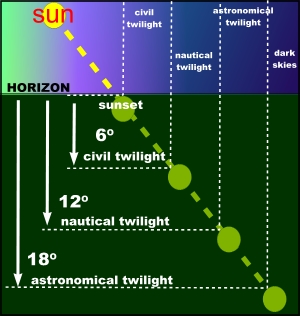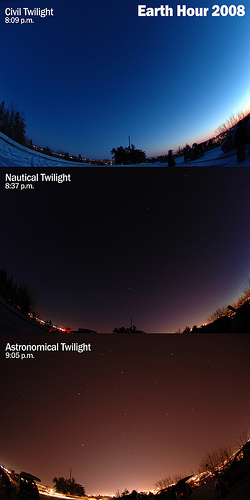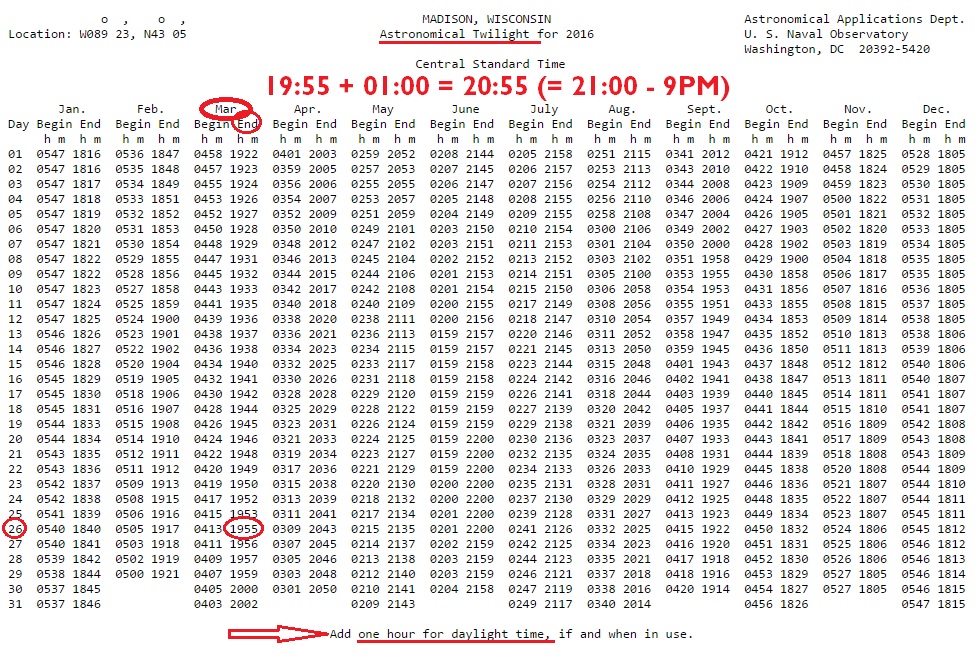We are getting to that time of Lent when we should be thinking about the schedule for the Vigil of Easter.
Here is an oldie but goodie. Updated for 2016.
From a reader:
There is a parish in our diocese that is advertising (in the bulletin and even in the diocesan paper) a 4:00 p.m. Easter Vigil. Are there ANY circumstances which allow for such an exception to the rule that the Easter Vigil may not begin until after sundown?
I seem to remember a clarification from Rome which stipulated that beginning an Easter Vigil at the same time as anticipated Masses is “reprehensible.”
I cannot think of any exceptions.
Given the time of year and daylight savings time, 4:00 pm is simply too early. It is still too light out. I am leaving aside the dilemma of people in, say, northern Alaska, where length of day and night and day at different times of the year can be pretty dramatic.
But, ad rem…
Since this night is the most important of the year, you want to get it right. Right?
That includes the time when the rite is to begin.
The symbolism of the light in darkness is important to the meaning of the rite. And the purpose of our liturgical rites is to have an encounter with mystery. The signs and symbols are important.
This Vigil (which is by definition a nighttime action) is not like the normal “vigil” celebrated in anticipation of a all other Sundays or Holy Day. It has a unique character in the whole liturgical year.
The rubrics for this rite, as found in the 2002MR says this is “nox“, night.
3. Tota celebratio Vigliae paschalis peragi debet noctu, ita ut vel non incipiatur ante initium noctis, vel finiatur ante diluculum diei dominicae.
The whole celebration of the Paschal Vigil ought to be completed at night, both so that it does not begin before the beginning of night, and that it finishes before dawn of Sunday.
 As your Lewis & Short Dictionary will indicate perago is “to complete”, in other words, “to get through it”. Vel…vel… is the equivalent of et… et.
As your Lewis & Short Dictionary will indicate perago is “to complete”, in other words, “to get through it”. Vel…vel… is the equivalent of et… et.
To repeat: the Vigil is to
a) be gotten through entirely during nighttime
b) begin after nightfall
c) be completed before dawn
Also,
4. Missa Vigiliae, etsi ante mediam noctem celebratur, est Missa pachalis dominicae Resurrectionis.
The Mass of the Vigil, even celebrated before midnight, is the Easter Mass of the Lord’s Resurrection.
In most cases you don’t have to say that a vigil Mass is for the following Sunday. But the unique character of the Rite, different from the Sunday morning Mass, needs to be clarified. Also, the time midnight is explicitly mentioned.
Midnight is the traditional time to begin the Vigil Mass rites!
Also, the 1988 Circular of the CDW, called Paschale solemnitatis (Notitiae 24 [1988] pp. 81-107) dealt with the time of the beginning of the Vigil,
78. This rule is to be taken according to its strictest sense. Reprehensible [!] are those abuses and practices which have crept in many places in violation of this ruling, whereby the Easter Vigil is celebrated at the time of day that it is customary to celebrate anticipated Masses.
“Reprehensible”… get that? And that from a year long before this Pope.
We must drill into initium noctis.
 This is the time when daylight is no longer visible. It is after nightfall.
This is the time when daylight is no longer visible. It is after nightfall.
The Jews made all sorts of distinctions about sundown and twilight and night. So do we when considering liturgical times.
The earliest time we can start the Vigil is initium noctis. What does this mean?
Nightfall is when sunlight is no longer part of the illumination of the sky.
Sunset is when the upper edge of the sun finally sinks the horizon. This is what the Jews called sunset. For Jews the evening twilight lasted until a few stars appeared. Then it was night. They had to figure these things out so that they knew, for example, how far they could walk to get to places, etc., before the sabbath fell.
There is “civil” twilight, that is, when the sun’s center is 6 degrees below the horizon. Of course there is still a lot of light from the sun in the sky at that time.
More helpful and accurate in this day of astronomical precision and electric lights is to go by astronomical twilight.
Astronomical twilight is, technically, when sunlight no longer illuminates the sky. That’s the time we are looking for.
That is a fancy way of saying, “it’s night”.
Astronomical twilight is helpful because we can use the calculations of the Naval Observatory to figure out when astronomical twilight takes place.
Exempli gratia let’s say you are in the Diocesis Extraordinarii Ordinarii Madisonensis, where I am now.
Summon a chart for Astronomical Twilight from the Naval Observatory for your place and find the beginning of astronomical twilight for 26 March (yes 26, because the Sunday is 27 March) My results were 1955 + 0100 hour for daylight savings – begins 13 March in these USA), which means that the starting time can be 2055. Let’s call it 9:00 pm, to start the procession to go to the place for the flinty sparking of the fire.
Your nightfall (your exact astronomical twilight) will be a little different depending on your location (latitude and longitude, elevation, etc).
Clearly it is the Church’s intention that the rites begin when it is dark. There can be a little flexibility. There might still be traces of twilight but it would be black in church with the lights out, outside trees, mountains, and buildings might be in the way, etc.
The point is: let there be darkness!
So… if by 4:00 pm where you are night has fallen, fine! Start the Vigil Mass.
If not, and I will bet it hasn’t in most places people inhabit, then 4:00 pm is too early.
And, given how important the Vigil is, it is a grave liturgical abuse to begin Mass at 4:00 pm.
Didn’t that document say “reprehensible”?



































I used to call the local weather office for my Pastor and ask them at what time sundown would take place on Holy Saturday. They would give me the exact time and add, “But that’s just sundown; for full dark you have to wait at least 30 minutes.” In later years the Diocesan Office started sending their annual “EASTER VIGIL MUST NOT START BEFORE “X:YY”
Two weeks ago I heard the priest who has recently been named our Administrator ask, “What does it matter at what time the Vigil starts?” I did a double take and realized that he was serious. Is it possible he got through Seminary and never heard that the Vigil is to start after dark? Don’t know now what the plan is for sure but he did mention that his parishioners “don’t like being out late” so is planning an early Vigil in his own parish.
If we use the word “reprehensible” to describe starting the Vigil Mass before full nightfall, what word do we have left to describe, say, the local abortionist serving as president of the parish council, or a Sr. Ding Dong escorting mothers into Planned Parenthood to kill their babies, or a Catholic university crowning Barak Obama as Savior in Chief. Some liturgists, including some Roman liturgists, need to get some perspective.
[Good question. We might start with “diabolical”.]
Our Vigil Masses are rather early for “security” reasons. “Midnight” Mass on the 24th is usually at 7:30 P.M. and Easter Vigil ranges from 5 P.M. to 7 P.M.
“Reprehensibile” in Latin means that it “deserves to be reprehended.” Also “blameworthy, worthy of censure.”
“Reprehensible” in English is likewise defined, in older dictionaries, as “deserving of reproof, rebuke, or censure; blameworthy.” Some even say “deserving of scolding.” However, newer dictionaries define it with things like “very bad.” One deduces that the connotations of “reprehensible” have intensified in English.
It’s shameful to be rebuked, but it’s not a criminal offense. Obviously there are worse things than “reprehensibile.”
The FSSP church in Rome begins the Easter Vigil at 22:30 hrs. Last year it ended, if I remember aright, shortly before 02:00 hrs. When I got back to my neighboring hotel, the doors where locked and I had to ring for the night clerk to let me in.
It was utterly sublime and resplendently glorious, and those in Rome for Easter will be blessed if they attend. The Gloria came around midnight.
Well, as for the traditional time… this is in the evening of Holy Saturday, not before 18 o’clock, I guess (in tradition, that is; we all know about the law that pulled the Vigil back even into the morning) and at least after the Nones have been said. Then would follow the First Vespers of Easter and, as the actually traditional midnight prayer, the Matins and Lauds of Easter.
Of course, that was when other Sundays did not have a mass on the preceding evening, and the Vigil did not count for the Sunday obligation.
The shift towards “around midnight” was introduced in the 1950s.
We have two Easter Vigils at our parish since the FSSP still don’t have their own parish here, which makes things tight for starting late enough, especially since our lone priest has to be up again for the Early morning Sunday Mass, but they make it work.
Our very rural parish begins its Easter Vigil service at 4:00 p.m. The justification is that the vast majority of the parishioners are retirees and folks well north of 60 years old. There is great concern over their driving after dark, and it is impractical to arrange rides from the remaining young whippersnappers because of the distances involved.
Yes, it’s not optimal. We all know it. But we prefer not to risk the lives of our parishioners or those with whom they might make unfortunate contact. And somewhere in the world it’s well after 6 p.m.
The FSSP parish I attend last year began theirs at 10 pm, if memory serves. It was plenty dark out.
What about….
Our TLM community does not have its own chapel, and the only time we can borrow a chapel is from late afternoon on Holy Saturday….
So there’s either an Easter Vigil starting at 4pm, or there is none….. BTW, it’s the only TLM in the diocese….
In the City of London, England the LMS hold their Vigil at 4pm while it is still light. But this is because the parish has their at 8pm and if they had it afterwards i.e. midnight it would be difficult for the people travelling long distances to attend.
Those arguing for a daylight Easter Vigil (age, distance, safety)– laud1645, Cantor, Roman Catholic Guerrilla — ignore that this Mass is not obligatory, and a Mass during the daylight of Easter Day fulfills the Sunday obligation. Ditto the Christmas Midnight Mass, which is also not obligatory.
Darkness is essential to the the Easter Vigil’s kerygma: going from darkness (evil, death) to light. The Vigil is the Christian Eleusinian Mysteries. No darkness, no Easter Vigil. Ditto the Christmas Midnight Mass, which pastors seem offer regardless of difficulties, unless no one shows up.
Pingback: THURSDAY EDITION – Big Pulpit
The last several years in my Texas diocese, our newer bishop (he has been here since 2007) has instructed parishes that Easter Vigil cannot begin until dusk. Since I have lived in this area (even before 2007), it usually begins about 8:30 p.m. Depending on how many converts are entering, the Vigil is normally around three hours (I try to take a nap in the afternoon if I can, because there are times I stay up to 2 or 3 am, and I’m not 28 years old anymore). I like to go to this Mass to support those who are entering, although I did go to a different parish last year at the invitation of a few friends and I was disappointed that the pastor cut the readings down to the minimum (three instead of seven) in order to shorten the Mass. My regular parish normally does all seven readings, and reads at least one or two en Espanol.
I also find that the majority of Catholics who attend Easter Vigil are there because they want to be there. Not to be mean, but the last several years I have also attended Easter Vigil in lieu of the Easter Sunday Mass for another reason…I find many Catholics can be disrespectful to the liturgy on Easter Sunday, when the A and P and the C and E Catholics arrive, complaining about the parking situation, the overcrowding (even heard, why do we have to stand when we were 10 minutes late?), talking during the homily, chewing gum, not knowing the prayers, etc. Our pastor and parochial vicars know this, and even make a tactful announcement a few weeks before Easter Sunday about “church etiquette and behavior” (some of you reading this I’m sure can relate) to be welcoming on Easter Sunday, since there will be C and E’s in the sanctuary.
I always like to read Dr. Peters posts. I recommended his book for a friend who was going through the annulment process, and I used to follow his website when he was following bishop appointments across the United States.
I recall many years ago doing some research about what time the Saturday evening Mass can start. Many dioceses, the earliest is 4:00 p.m. Two parishes in my diocese do 4:00 p.m. Mass, but most will do 5 or 5:30 p.m., and some will do a 5:00 p.m. in English and then a 7:00 p.m. in Spanish – as a kid, my brother and I were altar boys at the only Vigil at our parish, which was 6:00 p.m. (that has since been moved to 5:00 p.m., as the current pastor says that helps with other parish events, such as weddings).
I don’t remember the story (maybe Fr. Z can do a post on this), but I think the reasoning for the 4:00 p.m. is in the United States, it is dark in Rome, and on the east coast (and in places such as Michigan, Minnesota, and Wisconsin), it is sometimes dark by 5:00 p.m. in the winter. I’ve also been told by some Catholics that it is an abuse for a Catholic to regularly attend Saturday evening Mass, unless there is some kind of a valid reason (example: a nurse who is on a Sunday shift or someone in retail who has to work at the grocery store at 8:00 a.m. Sunday morning or someone who is getting on a plane at 8:00 a.m. Sunday morning for travel – Boy Scout camp in the summer we always left Sunday morning, so mom made sure we went to Saturday vigil before going to summer camp ) that will make it difficult for a Catholic to attend Sunday Mass.
I will admit that once in a while I have scheduled a Saturday night date where I have taken my date with me to Saturday evening Mass (say, 5 or 5:30 pm.) and then we went out for dinner afterward, or even a movie. Quite frankly, it does add something, and if is my date Catholic, she can also fulfill her Sunday obligation. I have a few other Catholic friends who have done this from time to time, and sometimes, married couples will do this every now and then.
I do know some good Catholics who regularly attend Saturday evening Mass, and quite a few I know do because on Sunday morning they have responsibilities such as CCD (and I know some choir people who like to attend Saturday evening Mass because when they are singing on Sunday they are so focused on what songs are next that it is difficult to sink in the Mass – I can relate) and I know some Knights that will attend Saturday evening Mass on those weeks when breakfast is being served Sunday morning after Mass. Those situations I don’t see any problem with attending Saturday evening Mass. Some Saturday evening Masses are done well, but others (and I have been to many) are just “get in and get out”.
I’m told there’s one parish in Las Vegas that has a Saturday vigil regularly at 2:30 p.m. on Saturday. Quite frankly, that sounds just too early.
All this talk about the finer points of the actual start of the time of night remind me of the astronomical clock in Prague that (to my knowledge) is the only one to actually tell the position of the sun relative to the horizon. On the dial, “liturgical” night is the black circular region, and the two orange regions above it are “aurora” and “crepusculum”, dawn and twilight.
Creating such a clock for every latitude (to serve as references) would be a tall order, too tall to fill, so surely keeping the Vigil at midnight is best practice. Though it does beg the question: are there occasions in the near-polar regions where the night in question is one where the sun remains above the threshold of astronomical twilight?
[There are apps for that.]